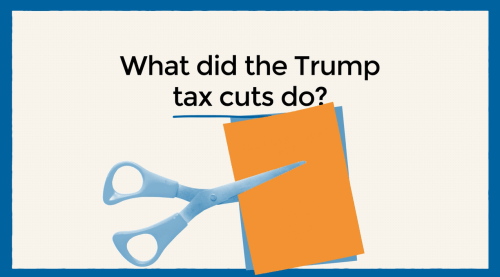Our grim fiscal outlook has led to renewed calls for a value added tax (VAT). As discussed by Greg Mankiw, conservatives have conflicting feelings about a VAT. The main appeal is that a VAT taxes consumption, so shifting from our current income tax system (which is actually a hybrid of an income tax and a consumption tax) to a VAT would remove existing disincentives to save, which in turn would promote long-term economic growth.
Yet many conservatives fear that a VAT, which taxes each stage of production, will lead to bigger government. As Milton Friedman wrote in 1980, “Because it would be collected by business enterprises, VAT would be concealed in the total price the consumer paid and hence not perceived as a direct tax burden. That is its advantage to legislators – and its major defect to the taxpayers.”
Friedman’s concern is now very much at the center of the new field of behavioral public finance. In the most recent edition of the American Economic Review, Raj Chetty, Adam Looney, and Kory Kroft, examine the effect of tax transparency – what economists call salience – on economic efficiency.
Traditionally, economists view the structure and application of a tax as unimportant. All that matters is the change in relative prices. But Chetty, Looney, and Kroft find that structure and application do matter. For example, they find that consumers are less likely to buy an item if a sales tax is explicitly listed on the product than if the same tax is instead added at check-out.
This simple finding has great political economy implications. With the traditional view that the magnitude of the tax is all that matters, the left/right debate among economists has focused on how responsive people are to a given tax. For example, would taxing labor lead to a small or large reduction in hours worked? The bigger the response, the more economically harmful the tax. But the new behavioral studies suggest that policymakers can actually manipulate the reaction to a tax. By making a tax less transparent, policymakers can trick consumers or workers into non-response, thus reducing the economic harm.
Chetty, Looney, and Kroft’s theoretical model indeed shows that efficiency increases as a tax becomes less salient. However, their model also shows that reducing the salience of a tax will necessarily harm consumers (albeit not by as much as it helps the government). In other words, tricking consumers into thinking a tax does not exist has two effects: 1) it leads them to poor consumption choices; and 2) it increases tax revenue because more transactions are taxed. In dollar terms, the harm to consumers is less than the increase in revenues. But whether or not you view an opaque tax as a useful policy instrument depends on whether you think the gains to government coffers are worth the reductions in consumer welfare.
As Friedman feared, government can go a step further. If complicated and opaque taxes can dull consumer response, they can also dull the political penalty associated with higher tax rates. An optimizing government could then increase tax rates by more than fully-informed voters would like. Amy Finkelstein, in the most recent edition of the Quarterly Journal of Economics, finds that drivers are less aware of tolls paid electronically and that switching from toll booths to electronic tolls led to a 20 to 40 percent rate increase. In other words, as salience goes down, tax rates go up.
The flourishing field of behavioral economics is improving our understanding of how psychological factors influence economic responses. But the risk is that policymakers will use these insights to deliberately temper healthy economic and political constraints on the growth of government.

Commentary
Behavioral Economics and the Conservative Critique of VAT
October 28, 2009